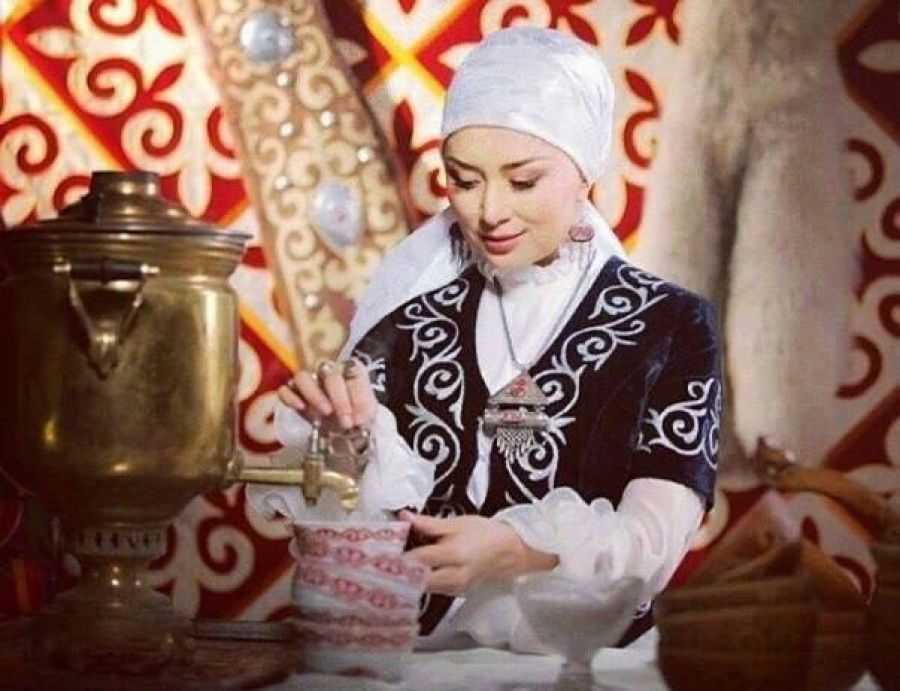Kazakh culture is rich in all sorts of customs and traditions, and an important part of every person's life, weddings, has not been spared. Some traditions have lost their significance over time, for example, the bride's showing (kyz koru) by the groom's parents. This rite took place at a time when the parents of the newlyweds themselves chose life partners for their children.
Sirga salu
However, most of the traditions are still relevant today. The very first ceremony is matchmaking (kuda tusu), the groom's relatives come to the bride's parents with gifts (korzhyn \ ladies) as a sign of respect. After meeting the two parties, the groom's daughters-in-law put on earrings (sirga salu). After this ceremony, the bride is considered officially engaged, and then the relatives present the kalym (kalyn-mal) to the girl's parents, as well as the mother's payment for the milk with which she fed the bride (day aky). The bride's parents also give gifts and treat to new matchmakers.

Kyz uzatu
This is followed by preparation for the next celebration - kyz uzatu, this is a wedding on the part of the bride. For this event, the bride must wear the Kazakh national dress, in Mangystau it is still mandatory. The girl's outfit consists of a traditional dress, and a camisole is worn on top of it (a vest with national patterns). An obligatory attribute of the bride's attire is a headdress - saukele, in ancient times it was possible to determine the financial situation by it, as well as to which clan the family belongs. At the end of the wedding, the bride has a farewell: a white path is laid, a special song is sung, and the bride, surrounded by two daughters-in-law, walks along with it and says goodbye to her relatives. At the end of the journey, the girl's family hands her to the grooms family, and she leaves for a new home. The ceremony is very beautiful and shows what role the daughter plays in the life of Kazakhs.

Uilenu toi
The groom's relatives at this moment are already waiting for the newlyweds and change the red headscarf (it is worn only by unmarried girls) of the bride for a white one (a sign that the girl is married). This is followed by the ceremony of opening the face (betashar), when a girl with a closed face, with a special song -kyui (music), makes a salem-beru (knicken as a sign of respect to her husband's relatives). During the bow, all guests give money (korimdik) for the new bride. After that, the face opens and the girl receives the status of "kelin" - the bride. The wedding begins (uilenu toi), where everyone wishes the newlyweds happiness and gives presents.

Kelin shai
After that, relatives come to visit to drink tea from the hands of the new daughter-in-law (kelin shai) and give her payment for this (korimdik). Besides, relatives from both sides invite the newlyweds to their home (esik corset), thereby strengthening family ties. An obligatory attribute is "tatti shai" (sweet tea) when first the bride's parents invite new relatives and a daughter with husband - this is a sign that the girl's family do not hold grudges and is satisfied with the daughter's choice. Next, the bride's new family is invited to visit. This kind of ritual is called "sweet" for a reason - the parents of both sides want a sweet life for their children, and also show respect and affiliation to each other (among Kazakhs, parents in law have a special place).

All these traditions are preserved in Mangystau and have the same importance as they have several centuries ago.
Предыдущие статьи
Symbol of Strength and Freedom of the Spirit - Otpan Tau Modern historical monument
Духовный комплекс “Отпан тау” - это памятник старины под открытым небом. За…
